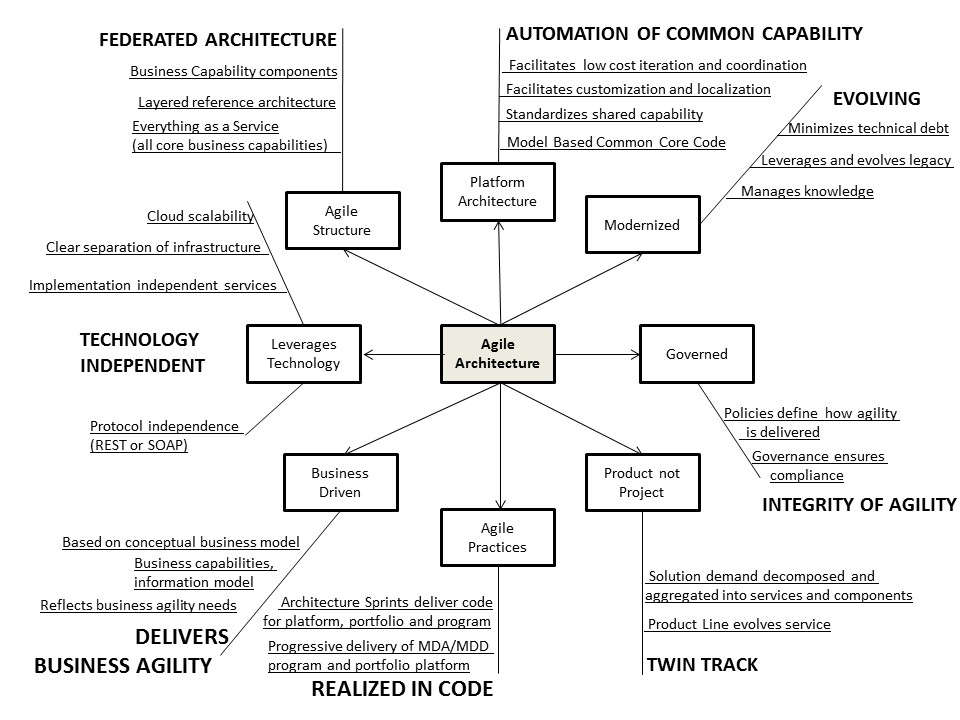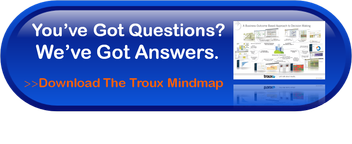Mapping Agile Architecture
Jason Bloomberg recently published a mind map for Agile Architecture. It’s a nice map that sketches top level thinking and I welcome that. It prompted me to do a drill down.
Mind maps are useful in that they are, by definition free form and intended to support brain storming. The downside is obvious – they are generally inconsistent and cause modelers’ intense frustration! Caveat emptor over, I fully agree with Jason that we need a dual interpretation of Agile – that is Agile practices and Agile Architecture, and I have written about this on many occasions. Also that the entire motivation is about business agility. On this last point my mind map is clearly a little more technical than Jason’s, and on reflection I think that is because it’s essential to converge the business and technology concerns.
For example, the map suggests a strong capability centric approach to interpret the business morphology. However this is insufficient; the technology must also establish appropriate levels of implementation independence that will facilitate the pluggability of business capabilities. Similarly you might think that considerations regarding the platform and delivery technology (such as MDA/MDD) are irrelevant to business concerns. However the platform and platform delivery technology are potentially massive drivers of rapid iteration and ongoing change, because they encapsulate common application level infrastructure and common services, so understanding the “business” standardization and localization model is crucial to delivering agility through this structure.


 Enterprise Architecture (EA) has changed exponentially over the years with transforming from an IT-driven initiative to a business strategy necessity. EA as a field formally took shape in 1987 with the publication of John Zachman’s article
Enterprise Architecture (EA) has changed exponentially over the years with transforming from an IT-driven initiative to a business strategy necessity. EA as a field formally took shape in 1987 with the publication of John Zachman’s article 

